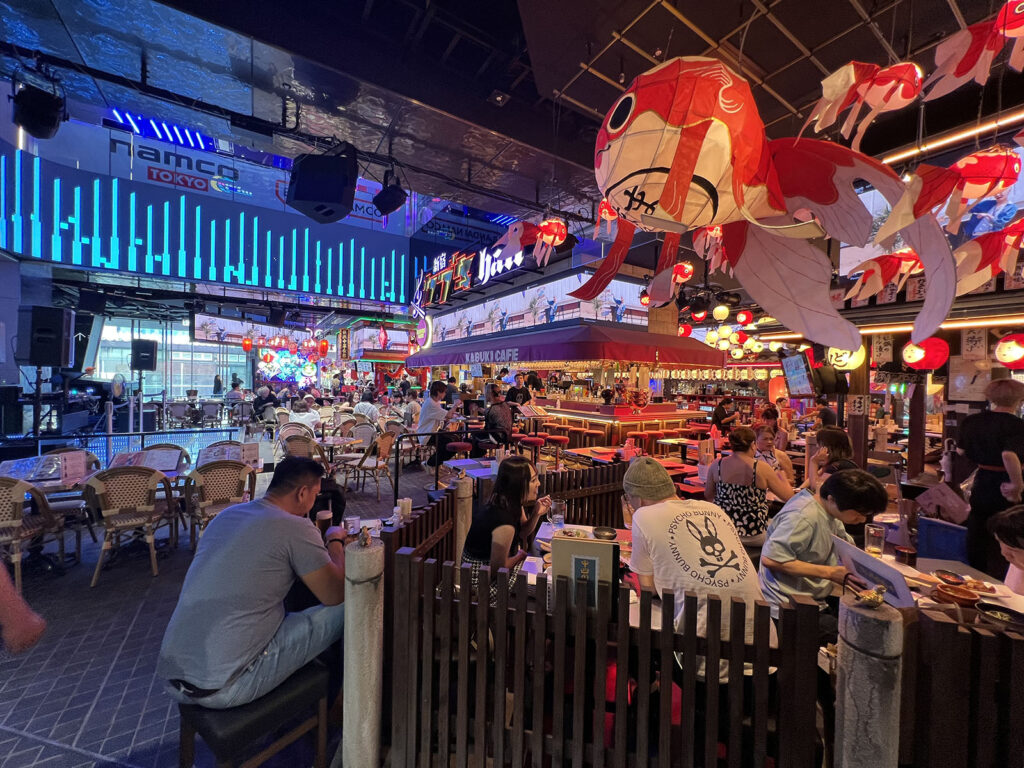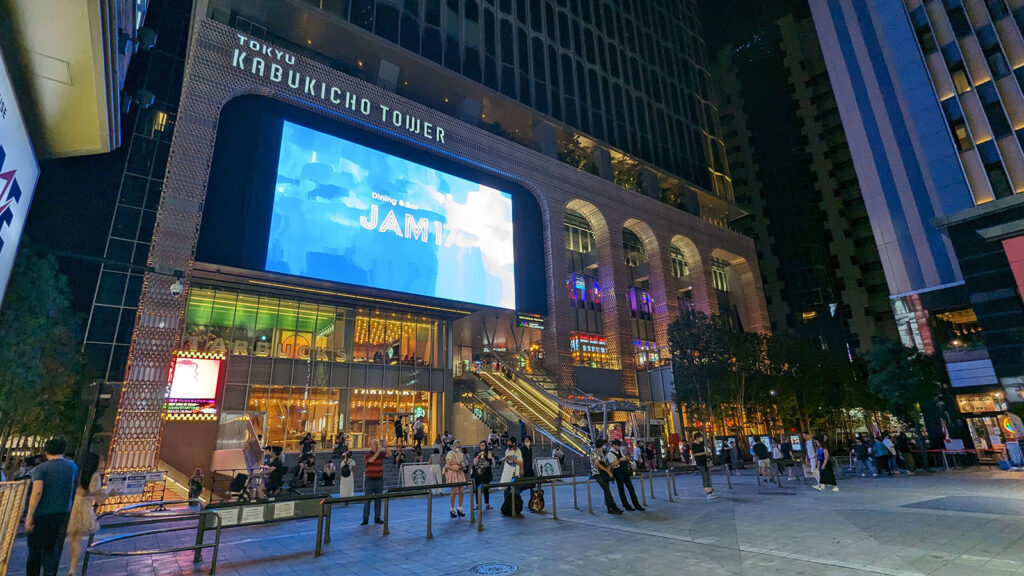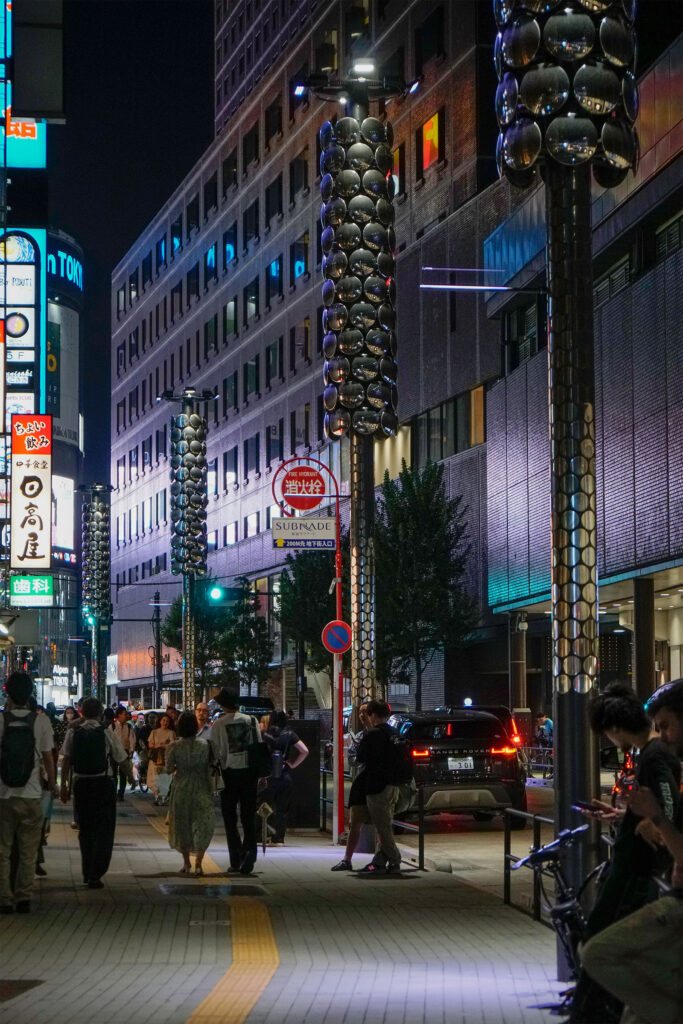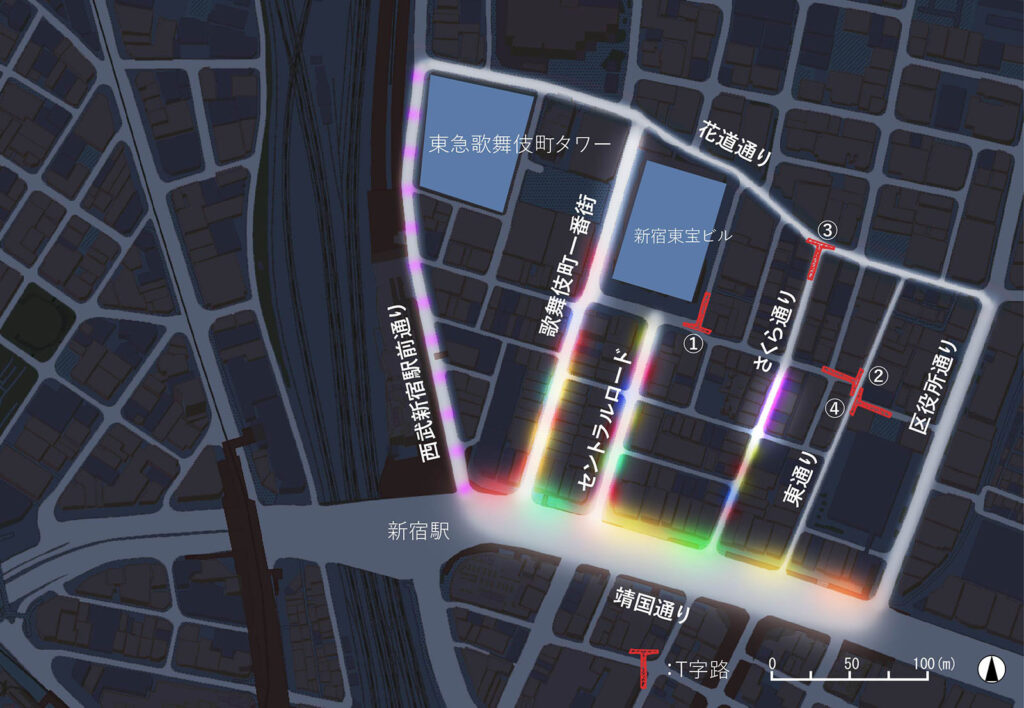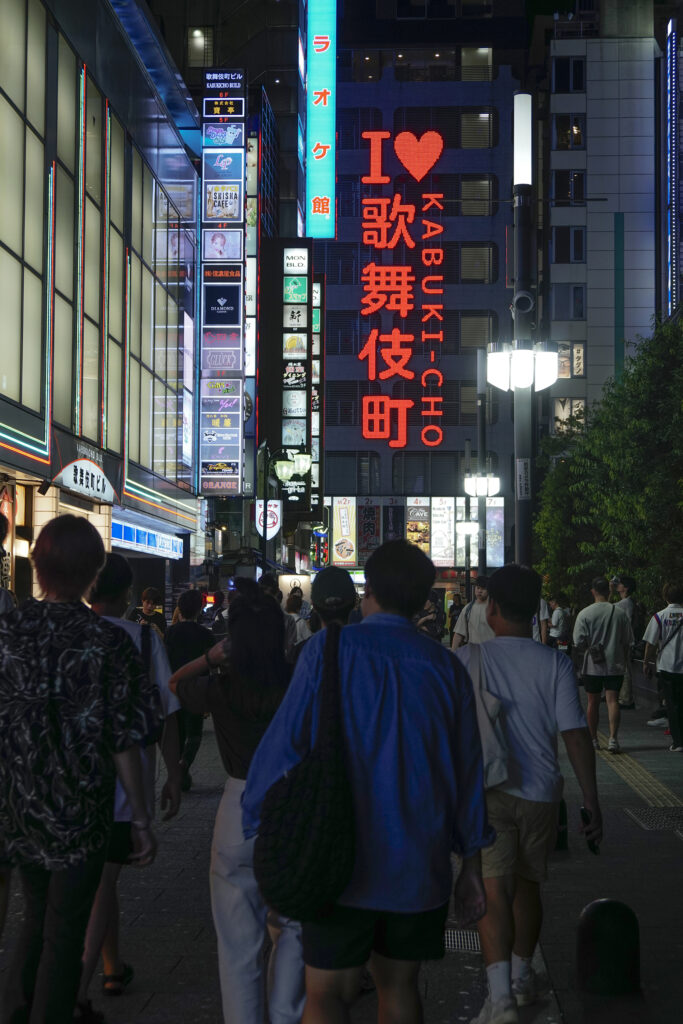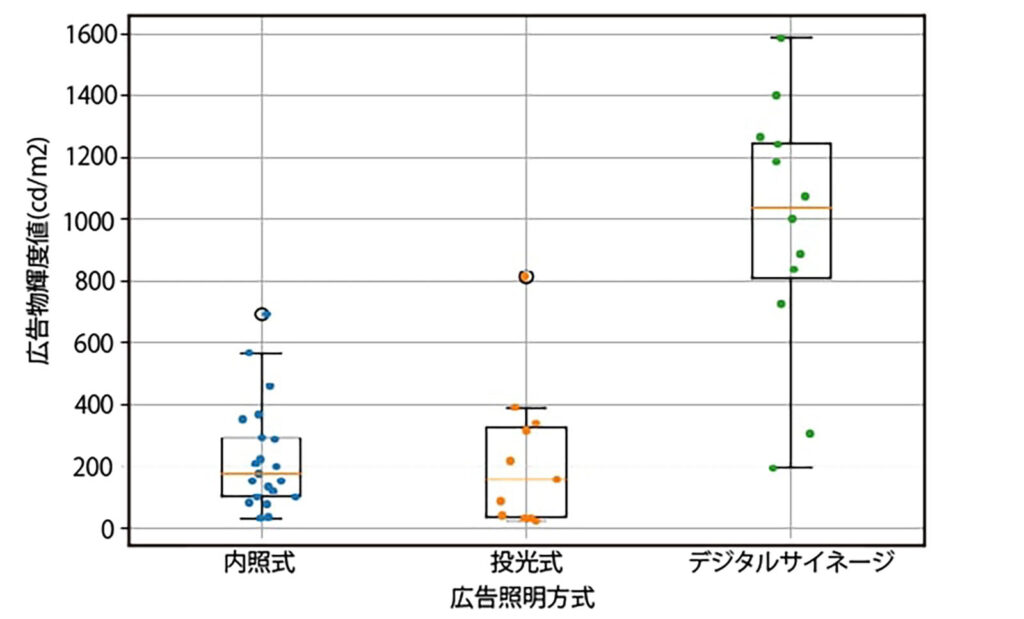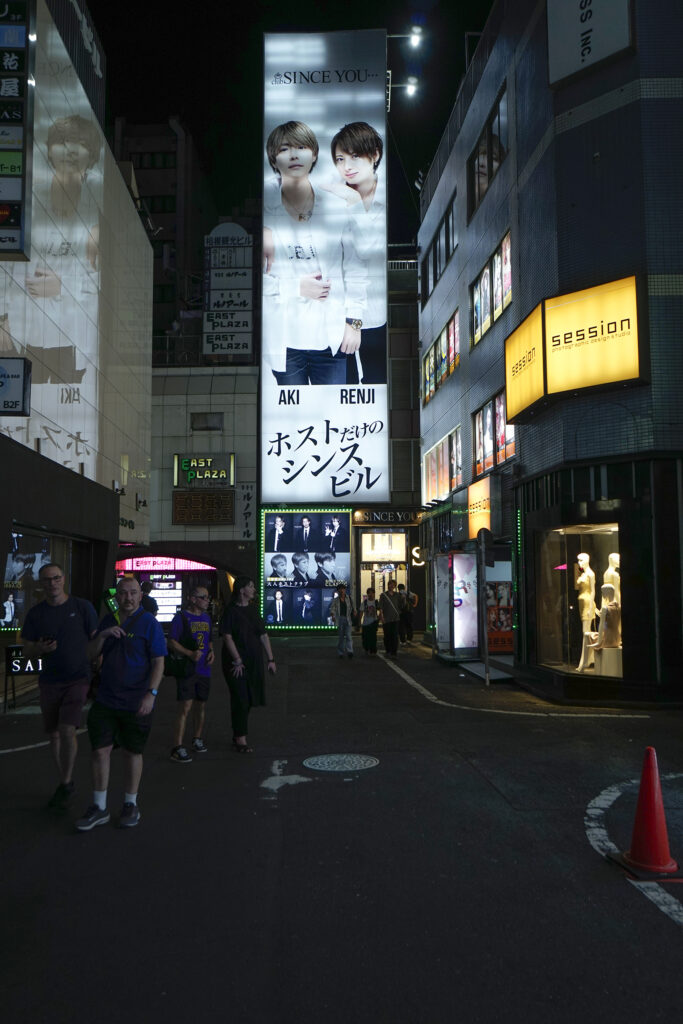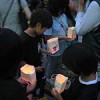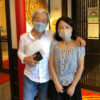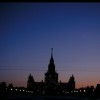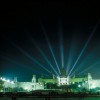2023.07.19 Shunichi Ikeda + Masashi Kurobe + Yuta Shibata
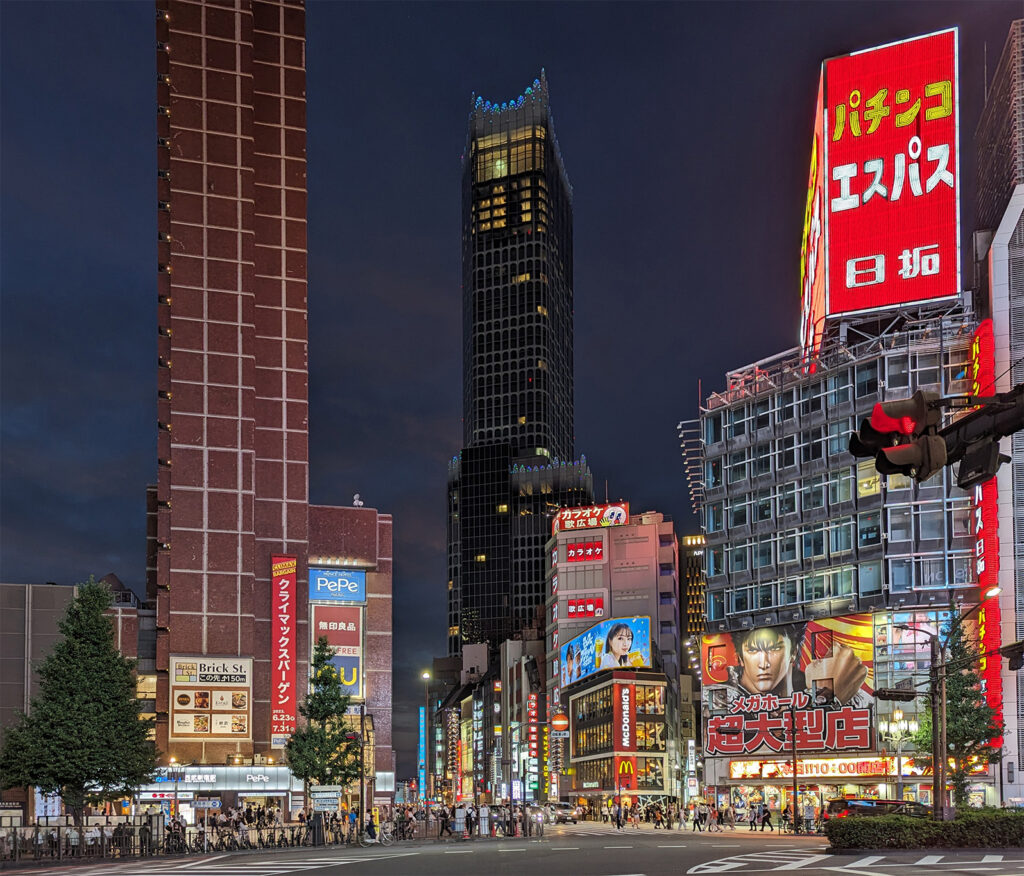
Shinjuku Kabukicho, Japan’s largest entertainment district, is a dazzling neon-lit labyrinth filled with restaurants, movie theaters, and amusement facilities. Its streets are teeming with people all night long. In recent years, however, the district has faced challenges, such as the growing presence of “Toyoko Kids” congregating in Cine City Square and engaging in criminal activities. Despite these issues, the opening of the new iconic Tokyu Kabukicho Tower has brought renewed attention to the area. As lighting detectives, we delve into the current state of Kabuki-cho, examining its lighting environment and cultural significance.
■Kabuki-cho Reborn: A Post-COVID Entertainment District
Seventeen years after our lighting survey in Shinjuku in 2006, Kabuki-cho has evolved from large-scale development into a global tourist hotspot. Though deserted during the 2020 state of emergency, the area is now vibrant again with the opening of Tokyu Kabuki-cho Tower. This survey revisits Kabuki-cho, comparing it with the previous survey and analyzing its changing lighting environment.
■Tokyu Kabuki-cho Tower: An All-Out Entertainment Complex
The Tokyu Kabuki-cho Tower, a 48-story, approximately 225-meter-tall, super high-rise entertainment complex comprising a hotel, movie theater, theater, and more, opened in April 2023.
Upon entering the building, I was overwhelmed by the countless glittering lights that filled the space. The small shops and narrow corridors were adorned with an excessive number of paper lanterns, creating an atmosphere reminiscent of an Asian festival. Outside, the building’s digital signage, facade indirect lighting, reflected light from Cine City Square, streetlights, and various other light sources created a chaotic lighting environment. I was particularly struck by the dynamic changes in the brightness of the road and square in front of the building, which were synchronized with the images displayed on the digital signage.
The tower’s upper floors, with LED-lit panel tips and faint ceramic-printed windows, blended into the night sky, with sparse lights from hotel rooms visible.
Despite being a new symbol of Shinjuku, the tower stood quietly at night, blending into Kabuki-cho’s glittering low-rise buildings. ( Masashi Kurobe)
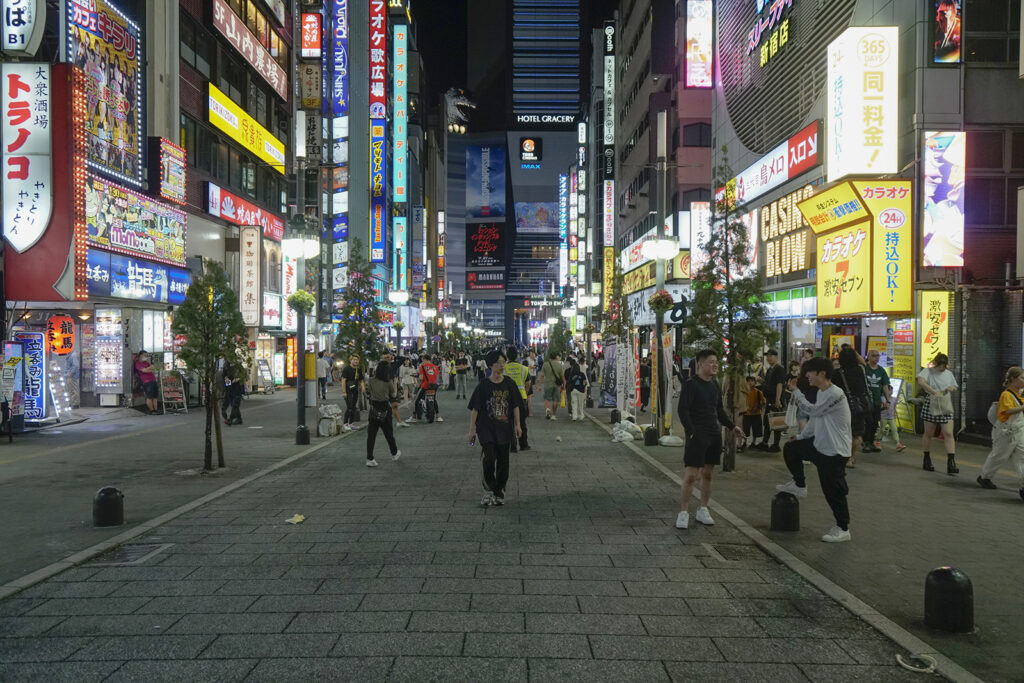
■Street-by-street variations in lighting
Kabuki-cho Ichiban-gai was exactly as I had imagined. Lined with izakayas, karaoke bars, and game centers, it was teeming with young people, office workers, and foreign tourists, truly the number one entertainment district in Japan. As I passed through the bright red entrance gate, countless illuminated signs overflowed from both sides of the street. The Tetris-like arrangement of these signs filled half of my field of vision, creating such a noisy and dazzling scene. Central Road was also bustling with people. Looking up, I saw Godzilla on the unlit Shinjuku Toho Building facade. I noticed that, unlike most large buildings over 100 meters tall, the facade of Shinjuku Toho Building was not illuminated. This not only emphasized Godzilla but also meant that there was no need for additional lighting, as the surrounding illuminated signs provided sufficient light.
Hanamichi-dori, lined with male host bars, hotels, and upscale restaurants, had a different atmosphere than other streets. Despite the large crowds, the street felt dimly lit due to the prevalence of white illuminated signs. Among these signs, the “face-filled signs” displaying the posed faces of male hosts were particularly striking. While the lineup of imposing faces was intimidating, the backlit nature of the signs meant that their brightness was not overwhelming, allowing for closer inspection. Perhaps this was how they captivated so many women.
As we walked down Sakura-dori, a street lined with izakayas and adult entertainment establishments, a giant, blindingly bright display suddenly came into view. Its size and intensity were out of proportion to the narrow street, creating the most unpleasant glare I experienced in Kabuki-cho.
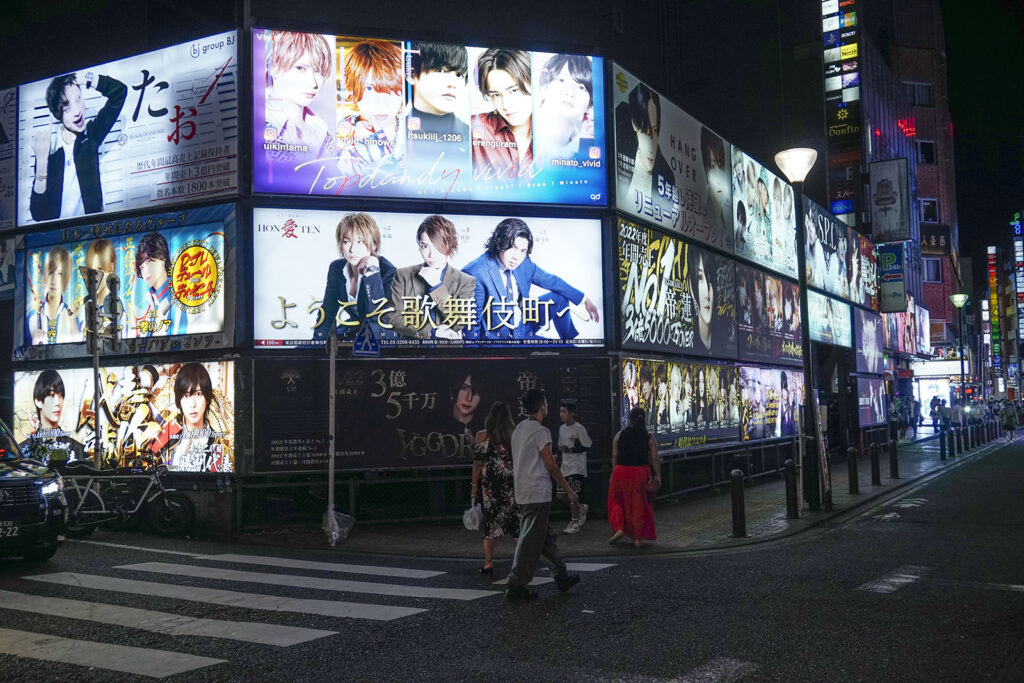
Along the railway tracks, I found Seibu-Shinjuku Station-mae Street. Of all the streets I surveyed, this one had the most refined and elegant lighting. The distinctive streetlights, look like clubs, contributed to this atmosphere. The white and purple lights from the tops of the poles were reflected off circular mirrors attached to the sides of the poles, illuminating the surrounding area. A closer look at these circular mirrors revealed that they reflected the sky during the day and the neon signs at night, adding a touch of elegance to the street.
■ Lighting at T-junctions
Kabuki-cho is characterized by its numerous T-junctions, intentionally designed to create a maze-like atmosphere and draw people deeper into the entertainment district. By preventing pedestrians from seeing what lies ahead until they reach the end of the street, these T-junctions foster a sense of anticipation. These planned T-junctions are also used as visual focal points, with striking lighting displays to draw attention.
The most eye-catching display I saw was a neon sign that read “I ♥ Kabuki-cho” in bold red letters. This simple, yet impactful sign served as a photo opportunity that encapsulated the chaotic atmosphere of Kabuki-cho, making the T-junction a landmark in itself.
The scale and design of the lighting varied widely. There were giant billboards for male host bars that covered almost the entire facade of tall buildings, entrances to buildings with simple horizontal stripes of colored lights that created a mysterious atmosphere, and a hot pot restaurant with a cute lamb logo. These signs were much larger than the ones on either side of the street, catching the pedestrian’s eye and providing a hint of what lay beyond.
While these eye-catching signs at T-junctions enhanced the individuality of each street and contributed to the unique atmosphere of Kabuki-cho, some oversized signs created the illusion of a dead end, diminishing the sense of anticipation. In contrast, T-junctions without such prominent signs often offered a more intriguing perspective, with the glimpses of the establishments beyond creating a sense of excitement and anticipation, reminiscent of a labyrinthine entertainment district. (Yuta Shibata)
■Luminance levels of outdoor signage
Kabuki-cho has attempted to shape its cityscape through the use of outdoor advertising, such as sleeve signs and digital signage, to create a lively atmosphere. However, excessive high-brightness advertising can become a source of glare, making the city’s lighting environment unpleasant. Therefore, careful attention should be paid to the brightness of advertisements.
To investigate this, we categorized outdoor advertisements into three types: backlit signs, spot-lit signs, and digital signage. The results are shown in the figure. Several advertisements exceeded the district’s guideline of 1000 cd/m², and digital signage in particular had the highest luminance levels. The brightness of digital signage fluctuated significantly depending on the content, highlighting the need for careful consideration of advertising brightness. While backlit and spot-lit signs were relatively low in luminance, the downward-facing light source of projected signs made the light source itself appear brighter, making the actual advertisement seem dimmer than the measured value. (Masashi Kurobe)
■Transformation of Kabuki-cho’s night scape
Seventeen years after our initial lighting survey in 2006, we revisited and compared the nighttime facades along Yasukuni-dori. During this time, two massive landmarks, the Tokyu Kabuki-cho Tower and the Shinjuku Toho Building, have been added in Kabuki-cho. While there are still numerous advertising lights on these buildings, we observed a decrease in self-luminous signs and an increase in externally illuminated signs.
The overall color palette has also become more subdued compared to the past. In other words, the nighttime view of Kabuki-cho seems to have lost some of its flamboyant character, which was once synonymous with the district. While it’s intriguing to speculate on future developments, I hope that Kabuki-cho, as Japan’s premier entertainment district, will continue to maintain its unique and vibrant nighttime atmosphere. (Shunichi Ikeda)






